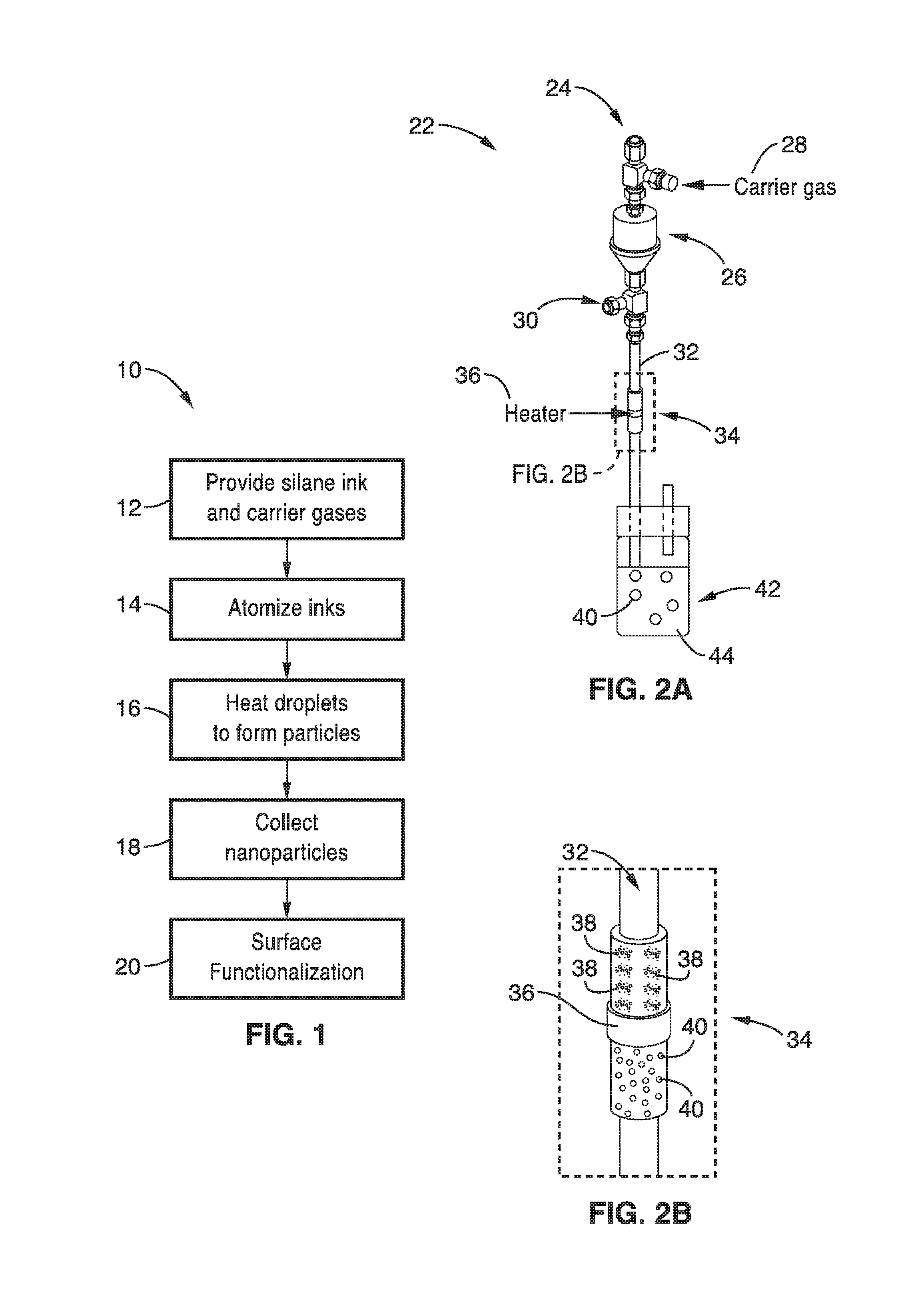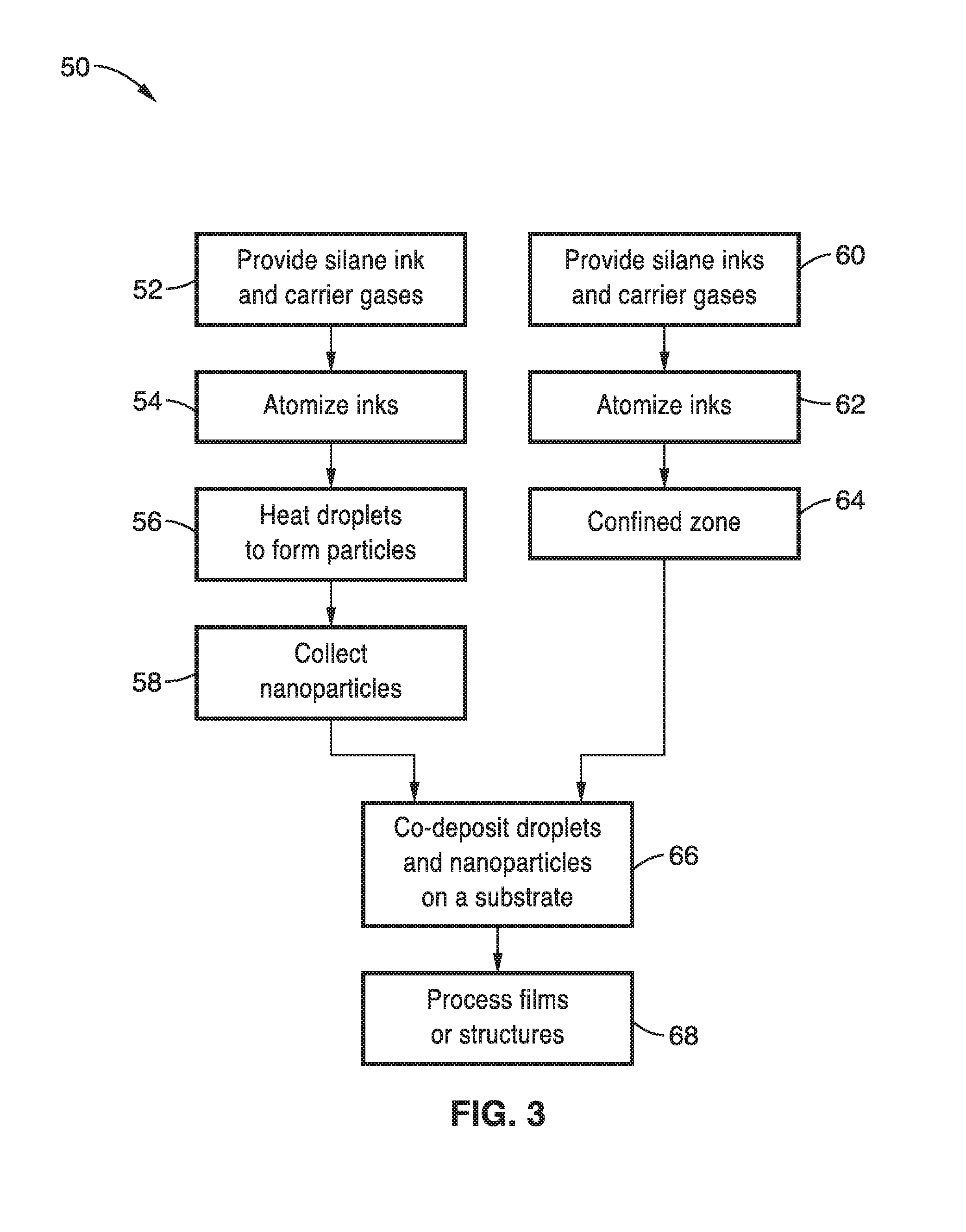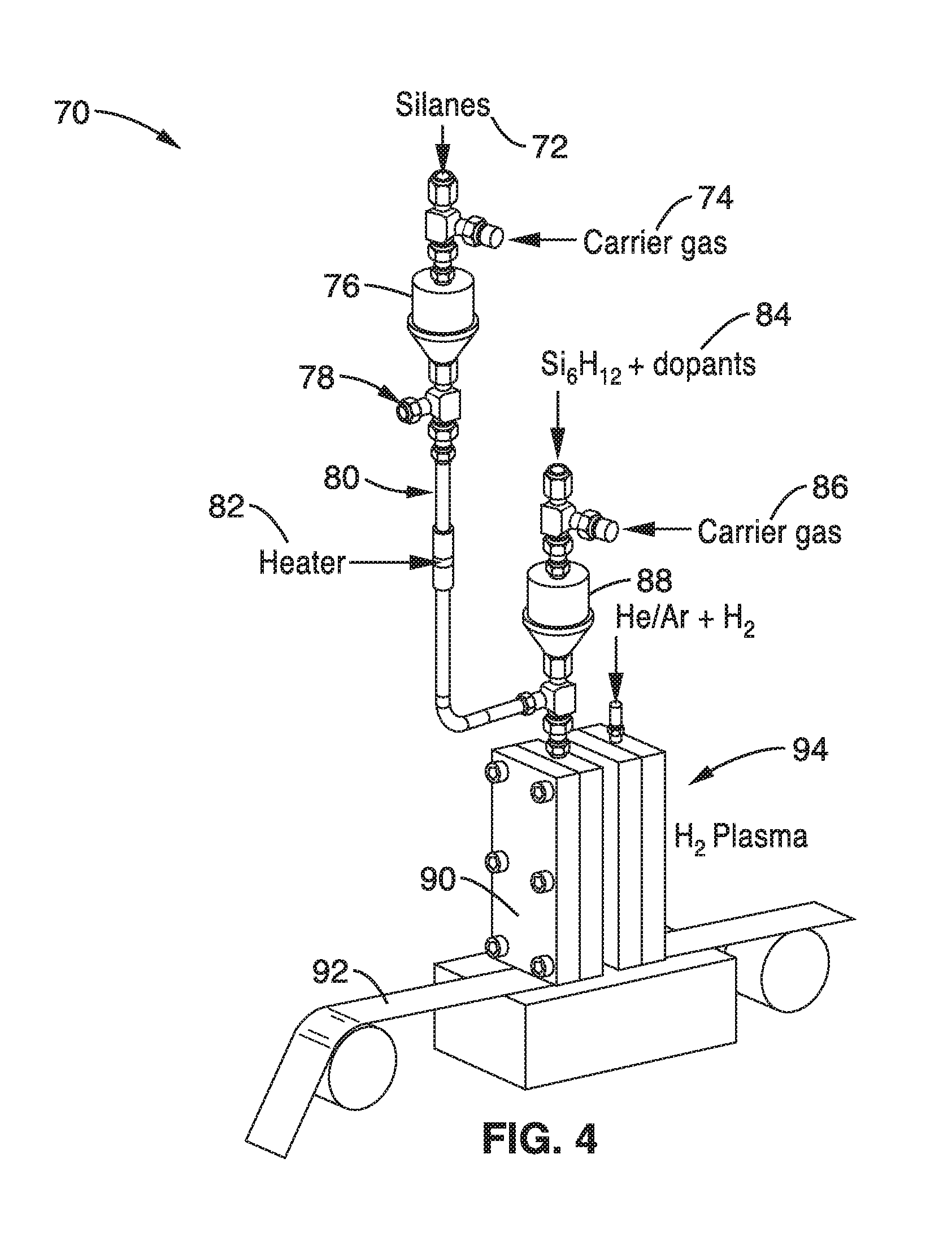Synthesis of si-based nano-materials using liquid silanes
a technology of nano-materials and silanes, applied in the field of compositions and methods for the synthesis of silicon-based materials, can solve the problems of inconsistencies in the synthesis rate and/or product composition, and affecting the synthesis ra
- Summary
- Abstract
- Description
- Claims
- Application Information
AI Technical Summary
Benefits of technology
Problems solved by technology
Method used
Image
Examples
example 1
[0099]In order to demonstrate the operational principles of the apparatus and synthesis methods, an apparatus was constructed having the features shown schematically in FIG. 2. A liquid silane, CHS either in its pure form or diluted in a solvent (toluene), was controllably injected using a syringe pump into an ultrasonic horn atomizer (Sono-Tek Inc. Milton, N.Y.) operating at 120 kHz. Helium (He) at a flow rate of 300 sccm was flowed through the atomizer to carry the aerosol mist through a coupling and into a 0.5″ OD (10.2 mm ID) 316 stainless steel (SS) or quartz tube, 30 cm long. An electric resistance coil heater 51 mm long (Freek-Heaters GmbH, Germany) was placed over the outside of the tube below the atomizer. A glass fiber filter or liquid bubbler particle collector was placed at the end of the SS tube.
[0100]The entire apparatus was located inside an inert atmosphere (N2, less than 1 ppm O2) glovebox to preclude exposure of the CHS precursor, and Si-NPs to ambient oxygen and w...
example 2
[0110]To demonstrate the methods, Si-QD's were synthesized with pure-CHS at 760° C. using the horizontal reactor with the structure shown in FIG. 2. The Si-QDs were collected in the bubbler that was filled with a mixture of mesitylene and dodecene. Post-synthesis, this mixture was refluxed at 170° C. for 12 hours to hydrosilyliate the Si-QDs (ex-situ passivation).
[0111]In another embodiment, liquid silane was mixed with hexane and used as the precursor liquid. The Si-QDs were collected in a bubbler filled with hexane. The Si-QDs synthesized using this approach did not require post-passivation since the Si-QDs were passivated in-flight (in-situ).
[0112]The PL spectra of the Si-QDs synthesized with neat Si6H12 and Si-QDs (ex-situ and in-situ passivated) were acquired and evaluated. Unlike other conventional techniques this approach does not require a post-passivation process.
example 3
[0113]To further demonstrate the methods, Si-QD's were synthesized with a toluene-CHS silane composition at different temperatures and collected in a bubbler. The bubbler media was centrifuged and the supernatant was collected. The supernatant collected from the samples synthesized at 800° C. had a red-orange color while others were transparent. The 800° C. supernatant was filtered through 200 nm Teflon mesh and the collected Si-NPs were analyzed to determine the particle size surface morphology and their photo-luminescent properties.
[0114]TEM studies of samples that were collected in toluene media showed the presence of Si-nano-crystals (NCs) or Si-QDs. TEM images showed Si-QDs with different sizes that were generally smaller than 10 nm with a distribution in the particle size ranging from 1.5 nm to 20 nm. Magnified images of the larger particles, approximately 20 nm in diameter, also showed crystalline lattice planes. The d-spacing determined from the fringe spacing corresponded t...
PUM
| Property | Measurement | Unit |
|---|---|---|
| Temperature | aaaaa | aaaaa |
| Temperature | aaaaa | aaaaa |
| Temperature | aaaaa | aaaaa |
Abstract
Description
Claims
Application Information
 Login to View More
Login to View More - R&D
- Intellectual Property
- Life Sciences
- Materials
- Tech Scout
- Unparalleled Data Quality
- Higher Quality Content
- 60% Fewer Hallucinations
Browse by: Latest US Patents, China's latest patents, Technical Efficacy Thesaurus, Application Domain, Technology Topic, Popular Technical Reports.
© 2025 PatSnap. All rights reserved.Legal|Privacy policy|Modern Slavery Act Transparency Statement|Sitemap|About US| Contact US: help@patsnap.com



